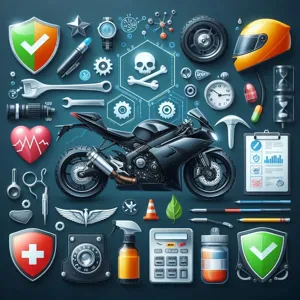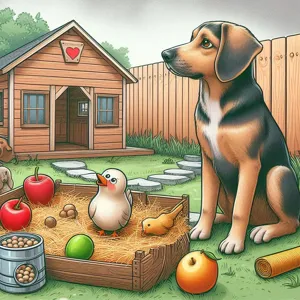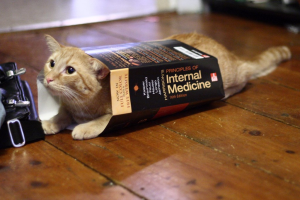Riding a motorbike offers an exhilarating sense of freedom and adventure, but it also comes with a unique set of challenges and responsibilities that every rider must navigate.
Whether you’re a seasoned motorcyclist or a newcomer eager to hit the open road, mastering the art of safe and responsible riding is crucial for your well-being and that of others. In this comprehensive guide, we’ll delve into essential tips that will enhance your riding skills, boost your confidence, and ensure that every journey is as safe as it is thrilling. From understanding the importance of proper gear and maintenance to honing your defensive riding techniques, we’ll cover everything you need to know to conquer the road with confidence. Join us as we explore the key principles of motorcycle safety, empowering you to embrace the ride while minimizing risks along the way.
1. Introduction to Safe Motorbike Riding

Riding a motorbike offers a unique sense of freedom and exhilaration, but it also comes with significant responsibilities. As the wind rushes past, the open road stretches ahead, and the thrill of the ride can often overshadow the potential dangers that lie in wait. That’s why mastering the art of safe and responsible motorbike riding is crucial for both your safety and the safety of others on the road.
In this guide, we’ll delve into the foundational principles of safe motorbike riding, emphasizing the importance of preparation, awareness, and skill. Whether you’re a seasoned rider or just starting out, understanding the nuances of safe riding can enhance your experience and minimize risks. From the moment you mount your bike to the instant you finish your ride, every aspect—from gear selection to road awareness—plays a vital role.
We’ll explore essential safety gear that can protect you in case of an accident, effective techniques for navigating various road conditions, and the importance of maintaining your motorcycle. Moreover, we will touch on the significance of mental preparedness and the impact of rider attitude on safety. By the end of this guide, you’ll not only be better equipped to handle the challenges of the road but also foster a culture of responsibility and respect among your fellow riders. So, let’s rev up our engines and embark on this journey towards mastering safe motorbike riding!
2. Understanding Your Motorcycle: Key Features and Safety Mechanisms
Understanding your motorcycle is not just about knowing how to ride; it’s about developing a deep familiarity with its key features and safety mechanisms. Each motorcycle, regardless of its type or model, has unique characteristics that influence how it handles on the road.
Start with the engine—your bike’s heart. Whether it’s a single-cylinder or a multi-cylinder engine, the power delivery and torque can vary significantly. Get to know how your motorcycle responds under different throttle inputs. This knowledge is crucial in anticipating how your bike will behave in various riding conditions, especially when navigating turns or sudden stops.
Next, familiarize yourself with the braking system. Most motorcycles are equipped with either disc or drum brakes, and understanding the difference between them can make a significant impact on your safety. Disc brakes generally offer better performance in terms of stopping power and heat dissipation. Practice using both the front and rear brakes effectively; remember that the front brake provides most of the stopping power, but a balanced approach will ensure stability and control.
Don’t overlook the importance of suspension. The suspension system plays a vital role in how your motorcycle absorbs bumps and maintains contact with the road. Adjusting the preload, compression, and rebound settings can enhance your ride’s comfort and handling, especially on rough or uneven surfaces. Take the time to understand how your bike’s suspension works and how to adjust it based on your weight and riding style.
Additionally, familiarize yourself with your bike’s safety features. Many modern motorcycles come equipped with advanced technologies, such as Anti-lock Braking Systems (ABS), Traction Control, and Cornering ABS, designed to improve stability and reduce the risk of accidents. Learning how these systems function can give you an edge in challenging riding scenarios, allowing you to ride with confidence.
Lastly, regular maintenance is essential for safety. Knowing how to check tire pressure, fluid levels, and brakes can make a world of difference. A well-maintained motorcycle is not only safer but also performs better, ensuring that you can enjoy the ride without unnecessary worries.
Embracing a thorough understanding of your motorcycle’s features and safety mechanisms is a fundamental step toward becoming a responsible rider. This knowledge not only enhances your riding experience but also significantly reduces the risks associated with motorbike riding. Equip yourself with this understanding, and you’ll be better prepared to tackle the road ahead.
3. The Importance of Wearing Protective Gear

When it comes to motorbike riding, the thrill of the open road can often overshadow the inherent risks involved. This is why wearing protective gear is not just a recommendation; it’s a vital aspect of ensuring your safety and well-being on two wheels. Imagine the sensation of wind rushing past you as you navigate winding roads, but now consider the impact of an unexpected fall or collision. Protective gear acts as your first line of defense against injuries, making it an essential component of every ride.
Start with a high-quality helmet, which is arguably the most critical piece of gear. A well-fitted helmet can significantly reduce the risk of head injuries, protecting your most vital asset. Look for helmets that meet safety standards and consider options with features like visors for better visibility or built-in communication systems for hands-free connectivity.
But a helmet alone is not enough. Invest in a durable jacket made from abrasion-resistant materials, designed with impact protection in critical areas such as shoulders, elbows, and back. These jackets not only shield your skin from scrapes but also provide insulation against the elements, ensuring comfort during long rides. Pair your jacket with sturdy riding pants—ideally made from similar materials—as they offer additional protection for your lower body.
Don’t forget about gloves and boots! Riding gloves enhance your grip on the handlebars, while also safeguarding your hands in case of a fall. Look for gloves that offer both protection and dexterity, allowing you to maintain control over your bike. As for footwear, opt for sturdy, ankle-high boots that provide support and protection. These boots should have reinforced toes and non-slip soles to prevent any unfortunate slips or mishaps.
Lastly, consider investing in additional protective accessories, such as knee and elbow pads, especially if you’re new to riding or plan to tackle more challenging terrains. These extra layers of protection can make a significant difference in reducing the severity of injuries.
Wearing protective gear is not just about safety; it’s about riding responsibly and showing respect for yourself and the sport. By prioritizing your safety with the right gear, you can focus on enjoying the ride, knowing that you’ve taken the necessary precautions to protect yourself. Remember, the road can be unpredictable, but with the right protective gear, you can master it with confidence and peace of mind.
4. Pre-Ride Safety Checks: What to Inspect Before Hitting the Road
Before you rev up your engine and set off on your next adventure, conducting a thorough pre-ride safety check is crucial for ensuring a safe and enjoyable experience. Just as a pilot meticulously inspects their aircraft before takeoff, a responsible motorbike rider should perform a series of checks to confirm that their bike is in optimal condition.
Start by inspecting your tires. Ensure they are properly inflated to the recommended pressure, and check for any signs of wear or damage. Tread depth is also vital; insufficient tread can dramatically affect your grip, especially in wet conditions. Next, examine the brakes—both the front and rear. Squeeze the brake levers to ensure they engage smoothly and check the brake pads for sufficient thickness.
Don’t forget to inspect your lights. A functional headlight, taillight, and turn signals are essential for visibility and communication with other road users. Turn on your lights and walk around the bike to confirm that everything is operational.
Moving on, check your fluids. Ensure that your oil, coolant, and brake fluid levels are all at their recommended levels. This not only enhances performance but also prolongs the lifespan of your motorbike. Additionally, take a moment to inspect the chain and sprockets—make sure they are clean, lubricated, and properly tensioned. A well-maintained drivetrain is essential for smooth acceleration and effective power transfer.
Lastly, take a quick look at your controls. Ensure that the throttle moves freely, the clutch engages smoothly, and all other switches and levers are functioning correctly. A moment spent on these checks can prevent potential issues that could lead to accidents or breakdowns on the road.
By establishing a routine for these pre-ride safety checks, you create a habit that not only enhances your safety but also fosters a deeper connection with your motorbike. Remember, a well-prepared rider is not just responsible— they’re also equipped for the thrill of the journey ahead. So, before you hit the road, take the time to inspect your machine, ensuring it’s ready to deliver the excitement and freedom that only motorbike riding can offer.
5. Mastering Basic Riding Techniques

Mastering basic riding techniques is the foundation of becoming a safe and confident motorbike rider. Whether you’re a novice taking your first lessons or a seasoned rider looking to refine your skills, focusing on the fundamentals is crucial for both your safety and enjoyment on the road.
Start with the proper riding posture. Keeping your back straight, elbows slightly bent, and feet firmly planted on the pegs not only enhances your control but also ensures that your body can respond effectively to the bike’s movements. Your eyes should always be looking ahead, scanning the road and anticipating potential hazards. This proactive approach helps you react swiftly to any changes in your environment.
Next, practice the art of throttle control. Smooth acceleration and deceleration are vital for maintaining balance and stability, especially when navigating through curves or uneven terrain. A gentle twist of the throttle allows for a more controlled ride, minimizing the risk of skidding or losing grip on the road.
Braking is another essential technique to master. Always apply both brakes evenly to achieve maximum stopping power without compromising balance. Remember, the front brake provides most of the stopping force, but too much pressure can cause you to lose control. Practicing emergency stops in a safe, open area can help you build confidence and learn how to react in critical situations.
Cornering is often a challenging aspect for many riders. To tackle this effectively, lean your body in the direction of the turn while keeping the bike upright. This technique, known as counter-steering, can help you navigate corners more smoothly and safely. Remember to look through the turn, as your bike will naturally follow where your eyes are directed.
Finally, always be aware of your surroundings. This means not only watching for other vehicles but also paying attention to road conditions, weather changes, and potential obstacles. Being vigilant will help you make informed decisions and maintain control of your bike at all times.
By focusing on these basic riding techniques, you’ll not only enhance your skills but also cultivate a safe riding environment for yourself and those around you. Mastery of these fundamentals paves the way for more advanced techniques, enabling you to explore the open road with confidence and responsibility.
6. Defensive Riding: Anticipating and Avoiding Hazards
Defensive riding is not just a technique; it’s a crucial mindset that every motorbike rider should adopt to enhance safety on the road. As a motorcyclist, you are inherently more vulnerable than drivers of larger vehicles, which makes anticipating and avoiding hazards all the more essential. The key lies in staying alert and proactively scanning your environment for potential dangers.
Begin by developing a keen awareness of your surroundings. This means not just focusing on the road immediately in front of you but also looking ahead for any changes in traffic patterns, road conditions, or potential obstacles. Watch for vehicles that may suddenly change lanes, pedestrians who might step out unexpectedly, or debris that could cause you to lose control. A good rule of thumb is to maintain a safe following distance that allows you enough time to react to any unforeseen circumstances.
Another important aspect of defensive riding is predicting the actions of other road users. Many accidents occur not because of a rider’s mistake, but due to the misjudgments of others. Anticipate the movements of cars, trucks, cyclists, and pedestrians; for instance, if a vehicle is approaching a stop sign, be prepared for it to roll through or misjudge the distance. Always position yourself in a way that maximizes your visibility and escape routes, ensuring that you can maneuver effectively if the need arises.
Utilizing your mirrors frequently and checking blind spots is also vital. Motorbikes are smaller and can easily be overlooked, making it essential to ensure that you are seen by other drivers. Make eye contact whenever possible, and use your signals in advance to communicate your intentions clearly.
Lastly, practice the art of smooth and controlled braking. Sudden stops can lead to skidding or loss of control; instead, anticipate when you will need to slow down and gently apply your brakes well in advance. This not only keeps you safe but also allows those behind you to react appropriately to your movements.
By embracing defensive riding techniques and cultivating a proactive approach, you significantly enhance your ability to anticipate and avoid hazards, making your journey not only safer but more enjoyable. Remember, the road can be unpredictable, but with the right mindset and skills, you can navigate it confidently and responsibly.
7. Navigating Different Weather Conditions

Riding a motorbike can be an exhilarating experience, but it also comes with its own set of challenges, especially when it comes to weather conditions. Mastering the art of riding in various climates is crucial for ensuring your safety and enhancing your riding skills. Whether you’re cruising under a bright sun, navigating through rain-soaked streets, or braving chilly winds, understanding how to adapt to these elements can make all the difference.
**Sunny Days:** On those glorious sunny days, the open road calls out to you. However, even in perfect weather, it’s essential to stay protected. Wear a good quality helmet, and consider sunglasses or a visor to shield your eyes from the sun’s glare. Remember to hydrate—riding can be physically demanding, and dehydration can impair your focus and reaction time.
**Rainy Conditions:** When the skies open up, your riding strategy needs to change. Wet roads can be slippery, making it vital to reduce your speed and increase your following distance. Avoid sudden movements, as abrupt acceleration or braking can lead to loss of traction. Invest in waterproof gear, including gloves and boots, to keep you dry and maintain your grip. Also, be on the lookout for road hazards such as puddles, which can obscure potholes or debris.
**Windy Weather:** Riding in strong winds can be particularly challenging, as gusts can affect your stability and maneuverability. When navigating windy conditions, keep a firm grip on the handlebars and be prepared to lean into the wind slightly. Position yourself in the lane where you can maintain the best balance and visibility. If the wind becomes too fierce, consider finding a safe place to pull over until conditions improve.
**Cold Temperatures:** Riding in colder weather requires additional precautions to ensure comfort and safety. Dress in layers to retain warmth and wear insulated gloves and thermal gear to protect against the biting cold. Remember that cold weather can also affect your bike’s performance—check your tire pressure regularly, as it can drop in low temperatures, and keep an eye on your fuel levels, as colder conditions may lead to less efficient fuel consumption.
Preparing for and adapting to different weather conditions is a key component of safe and responsible motorbike riding. By remaining aware of the challenges posed by each climate, you can not only enhance your riding experience but also keep yourself and others safe on the road. Embrace the elements, but always respect their power, and you’ll master the art of riding in any weather.
8. Riding in Groups: Tips for Safety and Communication
Riding in groups can be one of the most exhilarating experiences for motorbike enthusiasts, but it also comes with its own set of challenges. To ensure that each ride is not only enjoyable but also safe, it’s essential to establish clear communication and a solid understanding of group dynamics.
First and foremost, before you hit the road, hold a pre-ride meeting. This is where you can discuss the route, assign roles (like lead rider and sweep), and establish hand signals for communication. Simple gestures, such as pointing to the ground to indicate road hazards or raising a hand to signal a stop, can make a significant difference in maintaining safety without the need for verbal communication, which can be challenging while riding.
Maintaining a safe distance between bikes is crucial. This allows for ample reaction time in case of sudden stops or obstacles. A good rule of thumb is to keep at least two seconds’ worth of space between each motorcycle. This distance can vary depending on speed and road conditions, so always be observant and adjust accordingly.
Ride at a comfortable pace that accommodates the slowest rider in the group. It’s easy to get caught up in the excitement, but pushing too hard can lead to accidents and increased anxiety among less experienced riders. Remember, the goal is to enjoy the journey together, not to race to the destination.
In addition, use a staggered formation when riding. This formation allows for better visibility and helps prevent collisions. In this arrangement, riders should maintain their designated space, with the lead rider slightly to the left, the second rider to the right, and so forth. This setup not only enhances safety but also improves the overall flow of the group.
Lastly, always keep an eye on your fellow riders. Regularly check your mirrors to ensure everyone is accounted for, and if someone falls behind, consider stopping at a safe location to regroup. Remember, the bond of camaraderie that comes from riding together is just as important as the safety precautions you take.
By implementing these tips, you can enhance the experience of riding in a group, ensuring that everyone feels secure and connected on the open road. Happy riding!
9. The Role of Maintenance in Safe Riding
Motorbike riding is as exhilarating as it is demanding, and the importance of regular maintenance cannot be overstated when it comes to ensuring your safety on the road. A well-maintained bike not only enhances performance but significantly reduces the risk of mechanical failures that could lead to accidents.
Before you even think about hitting the road, it’s crucial to perform a thorough pre-ride inspection. Start with the basics: check your tire pressure and tread depth, as these are your primary points of contact with the road. Under-inflated or worn-out tires can compromise grip and handling, especially in wet conditions. Next, examine your brakes; they should respond promptly without any unusual noises. A malfunctioning brake system can turn a routine ride into a dangerous situation.
Don’t forget about the fluid levels! Engine oil, coolant, and brake fluid should all be at appropriate levels. Regularly changing the oil and filters not only prolongs the life of your motorbike but also ensures smoother operation. Additionally, keep an eye on your chains and cables; lubrication and adjustments should be part of your maintenance routine to prevent sluggish performance or sudden failures.
Furthermore, always check your lights and signals to ensure they’re functioning properly. Visibility is key in preventing accidents, and being seen by other road users can make a significant difference in your safety. Your helmet and protective gear should also be in good condition, as they play a vital role in protecting you in the event of a fall.
Ultimately, embracing a proactive approach to maintenance not only safeguards your safety but also enhances your riding experience. When your bike is in optimal condition, you can focus on the joy of the ride, knowing you’ve taken the necessary steps to protect yourself and enjoy the open road responsibly. Regular maintenance is not just a chore; it’s a commitment to safe riding and a fundamental aspect of being a responsible motorbike enthusiast.
10. Understanding Traffic Laws and Regulations
As a motorbike rider, one of the most crucial aspects of ensuring your own safety and the safety of others on the road is having a comprehensive understanding of traffic laws and regulations. Traffic laws are designed not only to dictate how vehicles should operate but also to create a harmonious flow of movement on the roads. For motorcyclists, these rules can be the difference between a smooth ride and a dangerous situation.
Begin by familiarizing yourself with the specific laws that govern motorbike riding in your region. Different states and countries may have varying regulations regarding helmet use, lane splitting, and speed limits tailored for two-wheeled vehicles. For instance, some places may require riders to wear specific safety gear, while others might enforce stricter penalties for not adhering to safe riding practices.
Understanding these laws goes beyond simply obeying speed limits or stopping at red lights. It also involves recognizing the rights of other road users. Motorcyclists often have to navigate through traffic in ways that larger vehicles do not, making it essential to know when it’s safe to maneuver. Being aware of local regulations regarding turn signals, blind spots, and the use of high beams can significantly reduce the risk of accidents.
Moreover, consider taking a motorcycle safety course that not only covers the technicalities of riding but also emphasizes the importance of legal compliance. These courses often provide insights into the nuances of traffic laws and can help you anticipate dangerous situations, giving you the tools to respond effectively.
Lastly, staying updated on any changes to traffic laws is vital. Laws can evolve due to new road safety studies or changes in public policy, and being informed can help you avoid fines and, more importantly, keep you safe. By understanding and respecting traffic laws, you can ride confidently, knowing you are contributing to a safer road environment for everyone.
11. Tips for Riding on Various Road Types
Riding a motorbike can be an exhilarating experience, but when it comes to navigating different road types, adapting your technique is essential for safety and confidence. Whether you’re cruising along a smooth highway, tackling winding mountain roads, or navigating busy city streets, each terrain presents its own set of challenges and opportunities. Here are some tailored tips to help you master your ride across various road conditions.
**1. Highways:** On wide, open highways, maintaining a safe distance from other vehicles is crucial. Be mindful of your speed and the flow of traffic; keeping a steady pace will help you avoid sudden braking. Use your mirrors frequently to stay aware of vehicles around you, and remember that larger vehicles can create turbulence, so give them plenty of space. Also, be prepared for sudden lane changes from cars, particularly in busy areas.
**2. Country Roads:** When riding on winding country roads, focus on smooth steering and maintaining a controlled speed. Lean into turns and keep your body aligned with the bike to enhance balance. Always be cautious of loose gravel or debris, especially after rain, as these can lead to skids. Look ahead to anticipate curves and adjust your speed accordingly, allowing yourself plenty of time to react to any surprises.
**3. Urban Streets:** City riding requires heightened awareness and quick reflexes. Stay alert for pedestrians, cyclists, and unpredictable drivers. Position yourself in the lane where you can be most visible, and use your horn and signals to communicate with other road users. Always anticipate potential hazards, such as opening car doors or vehicles merging unexpectedly. Taking the time to scan your surroundings can help you navigate through traffic with more ease and safety.
**4. Off-Road Trails:** If your adventures take you off the beaten path, you’ll need to adjust your riding style significantly. Off-road conditions can include mud, sand, and rocks, all of which require different handling techniques. Keep your weight centered and relaxed, using your legs to grip the bike rather than relying solely on your arms. When encountering obstacles, look ahead and plan your line carefully, maintaining momentum while adapting to changes in terrain.
By mastering the nuances of riding on various road types, you can enhance your skills and ensure a safer, more enjoyable journey. Remember, practice makes perfect, and the more experience you gain in different environments, the more confident and capable you’ll become as a motorbike rider. Stay safe, stay alert, and enjoy the ride!
12. Dealing with Road Rage and Aggressive Drivers
Road rage and aggressive drivers can turn a pleasant ride into a tense, nerve-wracking experience. As a motorcyclist, it’s crucial to navigate these situations with composure and strategy. The first step in dealing with road rage is to remain calm. When confronted with aggressive behavior from other drivers, resist the urge to retaliate or engage in a confrontation. Instead, take a deep breath and focus on maintaining control of your bike and your emotions.
Awareness is your best ally. Keep an eye on your surroundings; aggressive drivers often exhibit telltale signs, such as tailgating, erratic lane changes, or excessive speed. By anticipating their actions, you can create space between yourself and aggressive vehicles, reducing the likelihood of a close encounter. Always remember that your safety is paramount—if a driver is acting dangerously, it’s better to let them pass than to engage.
If you find yourself in a hostile situation, avoid making eye contact or gestures that could escalate tensions. Instead, use your bike’s maneuverability to safely distance yourself from the aggressive driver. Always signal your intentions clearly and maintain a predictable path to avoid alarming other drivers.
In some cases, it may be wise to pull over safely and let the aggressive driver get ahead. This moment can provide you with a chance to gather your thoughts and regain your composure. If road rage escalates to the point where you feel threatened, don’t hesitate to contact authorities. Documenting the incident with details such as license plate numbers, descriptions of the vehicle, and the driver’s behavior can assist law enforcement in addressing the situation.
Ultimately, the best approach to dealing with road rage is to prioritize your safety and peace of mind. Riding defensively and keeping a cool head not only helps you avoid dangerous confrontations but also sets a positive example for others on the road. Remember, every ride is an opportunity to enjoy the journey—don’t let aggressive drivers steal your joy or compromise your safety.
13. How to Handle Mechanical Failures on the Road
Motorbike riding is an exhilarating experience, but it comes with its own set of challenges—one of the most critical being the potential for mechanical failures while you’re out on the road. The last thing you want is to be miles away from home, feeling the thrill of the ride, only to be suddenly brought to a halt by an unexpected issue. Being prepared and knowing how to handle these situations can not only save you time and frustration but also ensure your safety.
First and foremost, regular maintenance is your best line of defense against mechanical failures. Before setting out on any journey, always perform a thorough pre-ride inspection. Check the tire pressure, brake fluid, oil levels, and lights. It’s also wise to be mindful of any unusual sounds or vibrations while riding; these can be early indicators of a potential problem.
In the unfortunate event that you do experience a mechanical failure, stay calm. The key is to react swiftly but safely. If you sense trouble—whether it’s a sputtering engine or a loss of power—gradually reduce your speed and find a safe place to pull over, away from traffic. Turn on your hazard lights to alert other drivers to your situation.
Once you’re safely off the road, assess the problem. If you have a basic understanding of your bike’s mechanics, you may be able to diagnose minor issues on the spot, such as a flat tire or a loose chain. Having a roadside toolkit, complete with tire repair kits and basic tools, can empower you to tackle small repairs yourself.
However, if the issue is beyond your expertise or if you feel uncomfortable attempting a repair, don’t hesitate to call for roadside assistance. Many insurance providers and motorbike clubs offer this service, providing peace of mind that help is just a phone call away.
Remember, safety is paramount. If you must wait for assistance, find a secure location to stay, and keep your bike visible to passing traffic. Use this time to connect with fellow riders or passersby; many are willing to offer advice or assistance.
By being proactive and knowing how to respond effectively to mechanical failures, you can keep your riding experience safe and enjoyable. After all, it’s not merely about the destination; it’s about the journey and the adventures you encounter along the way.
14. Continuous Learning: Taking Advanced Riding Courses
Continuous learning is a vital aspect of mastering the art of motorbike riding. While acquiring your initial license equips you with the foundational skills necessary for safe riding, the journey doesn’t end there. Enrolling in advanced riding courses is an excellent way to refine your techniques, boost your confidence, and enhance your overall safety on the road.
These courses typically cover a variety of topics, including advanced maneuvering, emergency braking, cornering techniques, and hazard awareness. Through practical exercises and expert instruction, riders learn how to handle challenging situations that may arise on the road—such as navigating through inclement weather or managing unexpected obstacles. The knowledge and skills gained from these courses can make a significant difference in your ability to respond to potential dangers, ultimately reducing the risk of accidents.
Moreover, advanced riding courses often emphasize the importance of maintaining a proactive mindset and staying aware of your surroundings. This heightened situational awareness can help you anticipate the actions of other motorists and make informed decisions in real-time. As you delve deeper into the intricacies of motorbike handling, you’ll also discover the nuances of bike maintenance and performance, ensuring that your ride is always in top condition.
Participating in these courses not only sharpens your skills but also connects you with a community of like-minded riders who share your passion for motorbiking. Engaging with fellow enthusiasts allows you to exchange tips, experiences, and advice, further enriching your riding journey.
So, whether you’re a seasoned rider looking to take your skills to the next level or a relatively new rider eager to build confidence, investing in advanced riding courses is a wise decision. Embrace the opportunity for continuous learning and watch as your riding transforms into a safer, more enjoyable experience on the open road.
15. Conclusion: Embracing Responsibility for a Safe Riding Experience
As we navigate the exhilarating world of motorbike riding, it becomes increasingly clear that the thrill of the open road is paired with an undeniable responsibility. Embracing this responsibility is not just about adhering to traffic laws or wearing protective gear—it’s about cultivating a mindset that prioritizes safety for yourself and those around you. Every ride is an opportunity to practice patience, awareness, and respect for the rules of the road.
By implementing the tips discussed throughout this guide, you’re not only enhancing your own riding skills but also contributing to a safer community of riders. From understanding the importance of regular bike maintenance to mastering defensive riding techniques, each element plays a crucial role in ensuring that your journey is both enjoyable and secure.
Moreover, fostering a culture of responsibility among fellow riders can lead to a more cohesive environment on the road. Share your experiences, encourage others to prioritize safety, and participate in community events that promote responsible riding. Together, we can create a network of riders who not only embrace the freedom of motorbiking but also uphold the duty to protect themselves and others.
As you rev up your engine and hit the road, remember that safety is not just an accessory—it’s an integral part of the ride. Embrace the responsibility that comes with being a motorcyclist, and let it guide you towards countless safe adventures ahead. Ride with confidence, stay vigilant, and enjoy every moment on your two-wheeled journey!
As we wrap up our exploration of essential tips for safe and responsible motorbike riding, we hope you feel empowered to embrace the thrill of the open road with confidence and caution. Mastering the art of motorbike riding goes beyond simply handling your bike; it encompasses a mindset of awareness, responsibility, and respect for your surroundings. By implementing these tips— from proper gear and regular maintenance to understanding road conditions and defensive driving techniques—you can enhance not only your safety but also the enjoyment of every ride. Remember, the journey is just as important as the destination, and by prioritizing safety, you can make each adventure memorable. So gear up, stay alert, and ride responsibly—your bike and fellow riders will thank you for it!

































